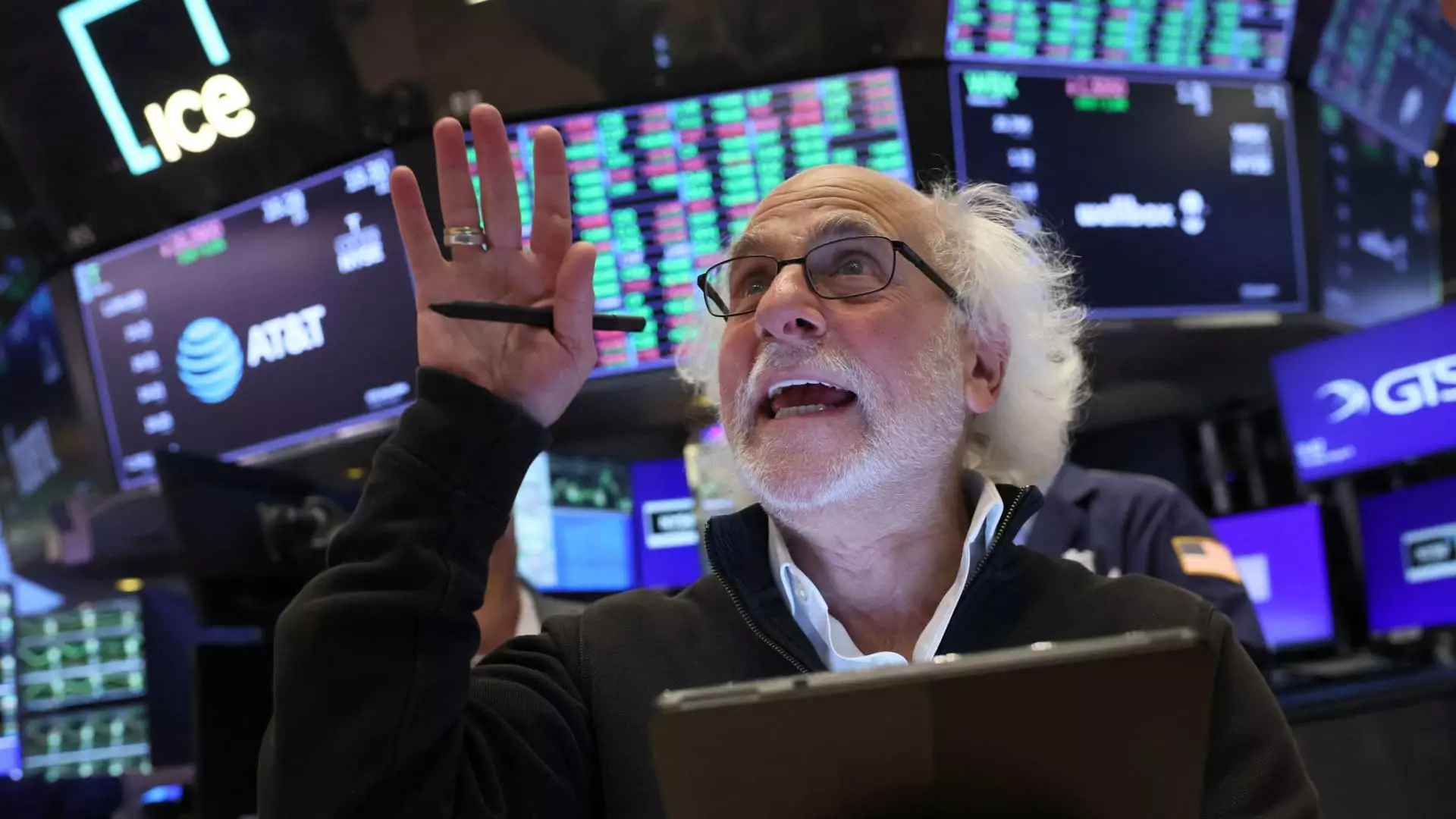The stock market’s astonishing rally on Wednesday, following President Donald Trump’s unexpected announcement regarding tariff adjustments, highlights the volatile nature of today’s economy. The S&P 500’s 9.52% climb marks a historic moment, ranking as the third-largest one-day gain since World War II. Such an explosive reaction is testament to the market’s sensitivity to news that could influence economic stability. While the immediate gain may evoke excitement, it also signals a larger underlying uncertainty that investors must navigate. Markets soared once the news broke that a 90-day pause on some tariffs could yield clarity in trade relations, a sentiment echoed by financial experts.
Anecdotes of Panic: The Days Preceding the Rally
Before this unprecedented bump in market performance, the atmosphere was thick with dread. The S&P 500 had endured a punishing four-day stretch, slipping into bear-market territory with a staggering 12% drop, an alarming trend reminiscent of the financial chaos induced by the pandemic. During this tumultuous period, the Dow shed over 4,500 points while the Nasdaq felt the impact of excessive selling pressure. These numbers tell a story of anxiety and frustration among investors who are increasingly weary of unstable trade policies that have far-reaching implications on their portfolios.
The rapid turnaround in market sentiment based on a single announcement does not inspire confidence. It showcases how the economy is still tethered to the whims of political maneuvering. Trump’s pullback on tariffs might be seen as a strategic retreat to placate investors worried about immediate economic fallout, but it raises the question of how sustainable this rally can be.
The Illusion of Certainty in Uncertain Times
Trump’s statement that over 75 countries responded to his initial tariffs could indicate a willingness among global partners to negotiate. However, this is merely a façade of reassurance. The president’s approach to trade is far from conventional, often leading to unpredictability. Investors should remain cautious and not fall into the trap of false security just because the market surged. Morningstar’s chief U.S. market strategist, Dave Sekera, aptly emphasizes that it’s too soon to call an all-clear. The phrase “temporary pause” could easily morph into another round of uncertainty if the negotiations take a turn for the worse.
Moreover, analysts and seasoned investors must grapple with the implications of a singular event like this on the broader economic landscape. A spirited rally built on the fleeting solidity of political announcements could just as quickly crumble, igniting another wave of market fear. Amidst this volatility, prudent investors should focus on long-term strategies rather than chase ephemeral gains sparked by announcements that could be rescinded at any moment.
It remains evident that today’s markets are a reflection not merely of economic fundamentals, but of the trepidation rooted in global politics. This point underscores the need for philosophical introspection about the role of trade, tariffs, and their long-term impact on market health and individual fortunes in a world ever more susceptible to political theatrics.

